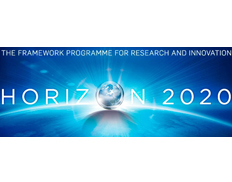Print

Advanced Space Propulsion for Innovative Realization of space Exploration: ASPIRE
Details
Locations:Belgium, France, Germany, Italy, Spain, UK
Start Date:Jan 1, 2021
End Date:Jun 30, 2023
Contract value: EUR 3,717,041
Sectors: Information & Communication Technology, Science & Innovation
Description
Programme(s): H2020-EU.2.1.6.2. - Enabling advances in space technology
Topic(s): SPACE-28-TEC-2020 - SRC - In-space electrical propulsion and station keeping - Incremental technologies
Call for proposal: H2020-SPACE-2020
Funding Scheme: IA - Innovation action
Grant agreement ID: 101004366
Project description
Hall-effect thruster technology becomes more mature
Hall-effect thruster is a type of ion thruster in which the propellant is accelerated by an electric field. It operates on a variety of propellants, the most common being xenon and krypton. Despite having attracted significant theoretical and experimental research since 1960, the technology has not reached a qualified status mostly due to the high system costs and the lack of test facilities. The EU-funded ASPIRE project aims to increase the technology readiness level of a 20-kW hall-effect thruster system to 6. Project work will build on the successful outcomes from another EU project called CHEOPS which is developing three different Hall-effect thruster electric propulsion systems to serve different orbits.
Objective
The recent developments in high-power Hall thruster systems, thanks to the optimal combination of performance and reliability, are enabling a wide set of mission scenarios. These technological advantages, coupled with the increasing availability of power onboard satellite platforms, are encouraging several spacecraft manufacturers to focus on the implementation of high-power Hall thruster systems.
The most promising scenarios envisage the introduction of a new class of service platforms characterized by versatility and a high level of reusability, the so-called Space Tug. Other applications, nowadays of particular interest, are the active debris removal to mitigate the possible collision risks. Besides, several exploration and scientific missions, such as Mars Sample Return, contemplate high power electric propulsion as the main propulsion system.
Despite these potential advantages, several factors have limited the possibility of reaching qualified status for these systems, such as huge costs and availability of test facility.
ASPIRE aims to increase the TRL of 20kW Hall Thruster system up to 6 by exploiting results obtained within CHEOPS. The project will cover many aspects, from mission scenarios analysis and satellite architecture consolidation to thruster unit TRL raise to 7 and enabling reduced-cost qualification. To keep operational and development costs as low as possible, krypton is maintained as baseline propellant.
The ASPIRE project also aims at augmenting the numerical modelling capability necessary for qualification of high-power EP systems, which lacks in Europe. The numerical models, developed and refined by three academic partners in the frame of this project, will be validated with the data gathered in more than 1000 hours of firing with Kr. Artificial intelligence is used to develop a novel simulation-aided qualification strategy, representing an exclusive European asset for the foreseen qualification and flight in the 2020-2030 decade.
